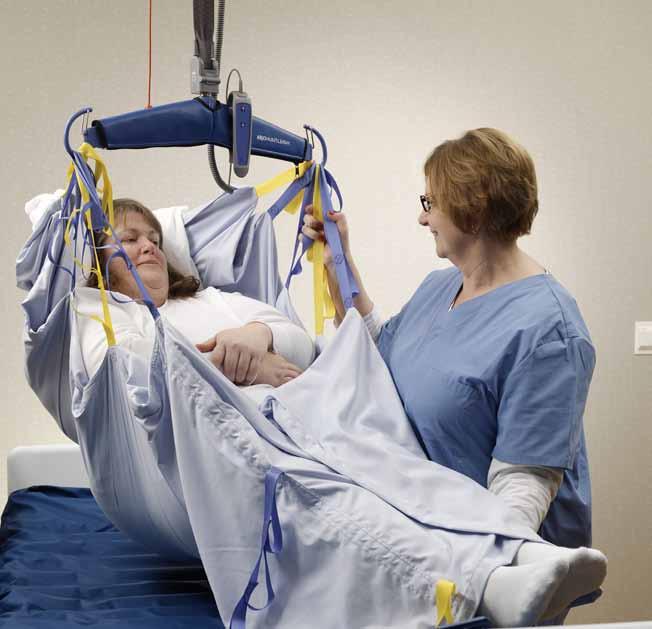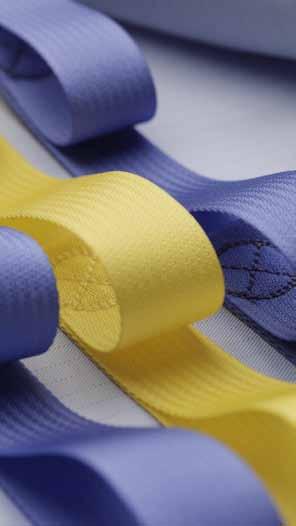
3 minute read
› Canterbury DHB’s sling pool
23 May 2022

Advertisement
Canterbury DHB has a largely standardised fleet of hoists and accessories, enabling patients across many sites to be handled safely, whether they are temporarily dependent due to illness or injury, or with an ongoing disability. The sling pool is a shared DHB resource enabling a wide variety of slings to be available without being purchased and managed by individual areas. This ensures staff can access the right sling for the right patient at the right time. The Injury Prevention Team will be managing the sling pool, alongside Canterbury Linen Services (CLS). CLS performs a vital role laundering our slings in line with Infection Prevention and Control (IP&C) protocols, flagging slings with obvious wear that should be replaced and providing vital data to help prioritise what slings need to be purchased each year to continue providing this service to our people. While it is the responsibility of all clinical staff to make sure slings are undamaged and fit for clinical use before using, CLS provide a back up to this by also checking slings as they are processed. All patients who require hoisting are measured and allocated their own sling. This remains with the patient for their exclusive use, transferring with them to different areas. It should also be transferred with them between hospitals. There is a largely standardised fleet of safe handling equipment across our sites, allowing the patient to have access to the equipment they need immediately on arrival to the new area.
This greatly reduces the risk of infection transmission between patients – especially when we consider we hoist people both clothed and unclothed. There are a few things we all can do to help this system really work well in all areas. 1. All areas with access to the sling pool should have a clearly visible chart with appropriate levels noted for slings most commonly required by that patient group.
This is checked regularly and enough ordered to top it up to the usual level. Submit an online order to CLS before 11am for next day delivery. 2. Holding extra slings above and beyond this level compromises access for other areas. Excess slings sitting unused in one area, may mean another area cannot have their order filled. Return any you don’t need – it might make a world of difference to another area! 3. When a sling is no longer required, place it in a black linen bag to be returned to CLS for laundering. If it is soiled or used within isolation precautions, place in a water-soluble bag, then a black linen bag. Slings must be reissued after 4 weeks use or when soiled, whichever occurs first. Do not launder any slings yourself. 4. Placing a used sling in the incorrect linen stream (such as a yellow bag) can cause premature damage due to the different laundering process. This reduces the number of slings available. 5. If a sling is damaged or frayed, return to CLS in a clear plastic bag with a note stating why it has been returned, so it can be assessed and removed if needed. This should be assessed prior to every use of the sling. Never throw away a damaged sling – it must be accounted for or it will not be replaced! 6. A sling can be kept on a hook in the patient’s bed space – this way it can dry before it is needed again if it becomes wet after showering a patient. MAXI TRANSFER SHEET Any questions? Please contact the Injury Prevention Team, LATERAL TRANSFER AND Health and Safety.REPOSITIONING SHEET











